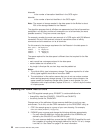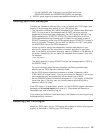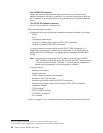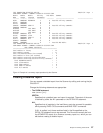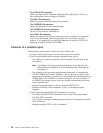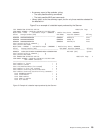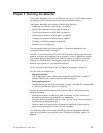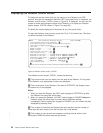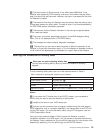v The STEPLIB DD statement
Specify the name of the Transaction Affinities Utility load library in which you
have installed the Scanner program, CAULMS.
v The INPUT DD statement
Specify the name of the load library to be scanned.
v The SYSPRINT DD statement
Specify the destination for the detailed report.
v The AFFMOD DD dummy statement
You do not need this for a detailed run.
v The DETAIL DD statement
Specify the name of the data set containing the list of modules to be scanned.
This list may be created initially as the output from a summary run of the
Scanner. If you specify ALL on the PARM statement, change the DETAIL DD
statement to specify //DETAIL DD DUMMY.
Contents of a detailed report
Each detailed report contains a section for each module, with:
v A header line giving the name, size, and entry point of the module
v A line for each possible affinity-causing command found, giving:
– The offset of the command argument zero declaration from the start of the
load module.
Note: This offset is not the same as the offset given by the Reporter; the
offset given by the Reporter is for the command itself. (See page 45
and page 71.)
– The contents of the command argument zero declaration (in hexadecimal).
– The EDF DEBUG line number, if present. This can provide a useful clue for
identifying false affinities. If a section of a load module was translated with the
DEBUG option, EDF DEBUG line numbers are given. For such a module, if
no DEBUG line number is given, this may indicate that what was found was
not an argument zero.
– What the command appears to be (for example, WRITEQ TS).
– Whether the affinity is inter-transaction (Trans), or transaction-system
(System).
v A line for each possible MVS POST command found, giving:
– The offset of the MVS POST command from the start of the load module
– The MVS POST instruction
– The 12 bytes of storage immediately before, and the 10 bytes after, the MVS
POST command
– Whether the MVS POST is SVC or otherwise
28 CICS Transaction Affinities Utility Guide





